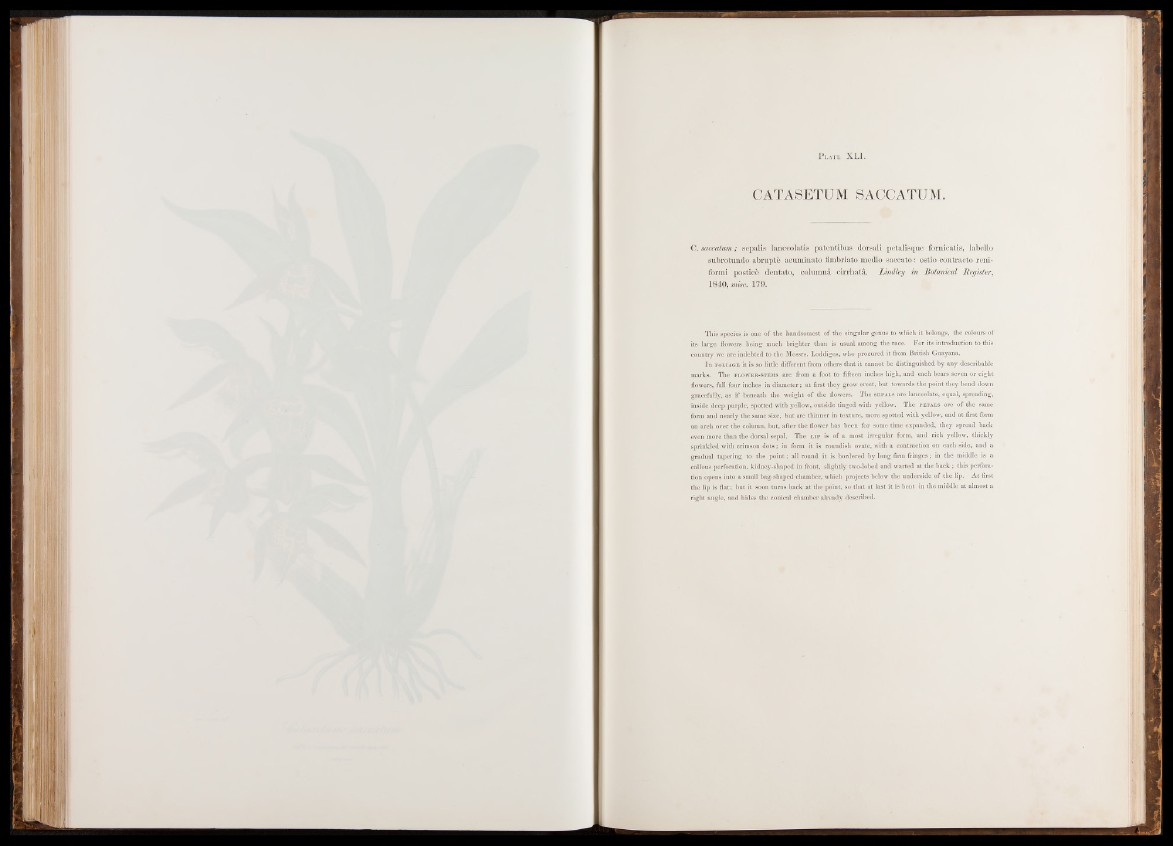
CATASETUM SACCATUM.
C. saccatum; sepalis lanceolatis patentibus dorsali petalisque fornicatis, labello
subrotundo abrupt^ acuminato fimbriato medio saccato: ostio contracto reni-
formi postic& dentato, columna cirrhata. Lindley in Botanical Register,
1840, misc. 179.
This species is one of the handsomest of the singular genus to which it belongs, the colours of
its large flowers being much brighter than is usual among the: race. For its introduction to this
country we are indebted to the Messrs. Loddiges, who procured it from British Guayana.
In foliage it is so little different from others that it cannot be distinguished by any deseribable
marks. The flower-stems are from a foot to fifteen inches high, and each bears seven or eight
flowers, full four inches in diameter; at first they grow erect, but towards the point they bend down
gracefully, as if beneath the weight of the flowers. The sepals are lanceolate, equal, spreading,,
inside deep purple, spotted with yellow, outside tinged with yellow. The petals are of the same
form and nearly the same size, but are thinner in texture, more spotted with yellow, and at first form
an arch over the column, but, after the flower has been for some time expanded, they spread back
even more than the dorsal sepal. The Lip is of a most irregular form, and rich yellow, thickly
sprinkled with crimson dots; in form it is roundish ovate, with a contraction on each side, and a
gradual tapering to the point; all round it is bordered by long firm fringes; in the middle is a
callous perforation, kidney-shaped in front, slightly two-lobed and warted at the back; this perforation
opens into a small bag-shaped chamber, which projects below the underside of the lip. At first
the lip is flat; but it soon turns back at' the point, so that at last it is bent in the middle at almost a
right angle, and hides the conical chamber already described.